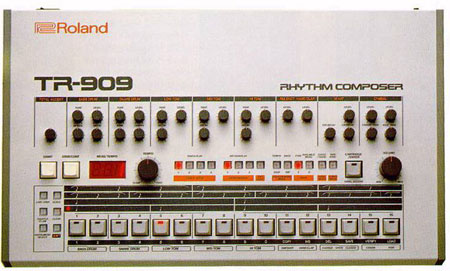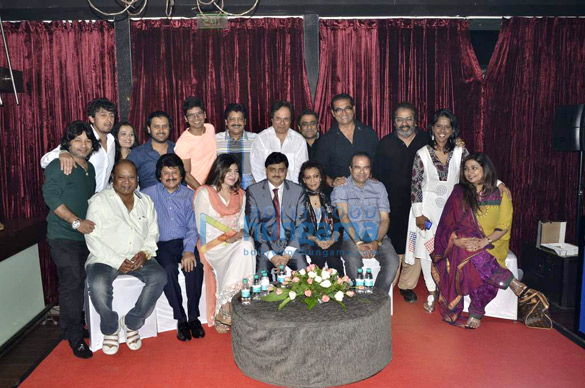|
TB-303
The Roland TB-303 Bass Line (also known as the 303) is a bass synthesizer released by Roland Corporation in 1981. Designed to simulate bass guitars, it was a commercial failure and was discontinued in 1984. However, cheap second-hand units were adopted by electronic musicians, and its "squelching" or "chirping" sound became a foundation of electronic dance music genres such as acid house, Chicago house and techno. It has inspired numerous clones. Design and features The TB-303 was manufactured by the Japanese company Roland. It was designed by Tadao Kikumoto, who also designed the Roland TR-909 drum machine. It was marketed as a "computerised bass machine" to replace the bass guitar. However, according to ''Forbes'', it instead produces a "squelchy tone more reminiscent of a psychedelic mouth harp than a stringed instrument". The TB-303 has a single oscillator, which produces either a "buzzy" sawtooth wave or a "hollow-sounding" square wave. This is fed into a 24 dB/ ... [...More Info...] [...Related Items...] OR: [Wikipedia] [Google] [Baidu] |
Acid House
Acid house (also simply known as just " acid") is a subgenre of house music developed around the mid-1980s by DJs from Chicago. The style is defined primarily by the squelching sounds and basslines of the Roland TB-303 electronic bass synthesizer-sequencer, an innovation attributed to Chicago artists Phuture and Sleezy D circa 1986. Acid house soon became popular in the United Kingdom and continental Europe, where it was played by DJs in the acid house and later rave scenes. By the late 1980s, acid house had moved into the British mainstream, where it had some influence on pop and dance styles. Acid house brought house music to a worldwide audience. The influence of acid house can be heard in later styles of dance music including trance, hardcore, jungle, big beat, techno and trip hop. Characteristics Acid house's minimalist sound combined house music's ubiquitous programmed four-on-the-floor 4/4 beat with the electronic squelch sound produced by the Ro ... [...More Info...] [...Related Items...] OR: [Wikipedia] [Google] [Baidu] |
Charanjit Singh (musician)
Charanjit Singh (1940 – 5 July 2015) was an Indian musician from Mumbai, who performed as a session musician, often as a guitarist or synthesizer player, in numerous Bollywood soundtrack orchestras from the 1960s to 1980s, working with ''filmi'' composers such as Shankar-Jaikishan, R.D. Burman, S.D. Burman, and Laxmikant–Pyarelal. In the 21st century, Singh became known for his 1983 album '' Synthesizing: Ten Ragas to a Disco Beat'' following retrospective associations with acid house, both of which prominently feature the Roland TB-303. It received re-release in 2010 on the Bombay Connection label. Biography Singh led a wedding band and recorded and released a number of albums covering popular film songs. These were a form of instrumental elevator music, some of which have since been re-released by Sublime Frequencies, such as his steel guitar renditions of "Manje Re" from '' Bandhe Haath'' in 1973 and " Chura Liyaa Hai Tumne" from '' Yaadon Ki Baaraat'' in 1975. In ... [...More Info...] [...Related Items...] OR: [Wikipedia] [Google] [Baidu] |
Roland Corporation
is a Japanese multinational manufacturer of electronic musical instruments, electronic equipment, and software. It was founded by Ikutaro Kakehashi in Osaka on 18 April 1972. In 2005, its headquarters relocated to Hamamatsu in Shizuoka Prefecture. It has factories in Malaysia, Taiwan, Japan, and the United States. As of December 2022, it employed 2,783 people. In 2014, it was subject to a management buyout by its CEO, Junichi Miki, supported by Taiyo Pacific Partners. Roland has manufactured numerous instruments that have had lasting impacts on music, such as the Juno-106 synthesizer, TB-303 bass synthesizer, and TR-808 and TR-909 drum machines. It was also instrumental in the development of MIDI, a standardized means of synchronizing electronic instruments manufactured by different companies. In 2016, ''Fact'' wrote that Roland had arguably had more influence on electronic music than any other company. History Background Roland founder Ikutaro Kakehashi had founded ... [...More Info...] [...Related Items...] OR: [Wikipedia] [Google] [Baidu] |
Tadao Kikumoto
is Roland's senior managing director and head of its R&D center. He designed the TB-303 bass synthesizer and the TR-909 drum machine. He was also the chief engineer of the Roland TR-808 drum machine. Roland TR-808 Design The Roland TR-808, a programmable drum machine, was launched in 1980. The TR-808 included unique artificial percussion sounds, such as “the hum kick, the ticky snare, the tishy hi-hats (open and closed) and the spacey cowbell.” The machine is particularly noted for its powerful booming bass drum sound, built from a combination of a bridged T-network sine oscillator, a low-pass filter, and a voltage-controlled amplifier. The bass drum decay control allows the user to lengthen the sound, creating uniquely low frequencies that flatten slightly over long periods, which can be used to create basslines or bass drops.'' Spin''February 1990, page 24/ref> It was the first drum machine with the ability to program an entire percussion track of a song from begi ... [...More Info...] [...Related Items...] OR: [Wikipedia] [Google] [Baidu] |
Techno
Techno is a genre of electronic dance music (EDM) which is generally produced for use in a continuous DJ set, with tempos being in the range from 120 to 150 beats per minute (bpm). The central rhythm is typically in common time ( ) and often characterized by a repetitive four on the floor beat. Artists may use electronic instruments such as drum machines, sequencers, and synthesizers, as well as digital audio workstations. Drum machines from the 1980s such as Roland's Roland TR-808 and Roland TR-909 are highly prized, and software emulations of such retro instruments are popular in this style. Much of the instrumentation in techno is used to emphasize the role of rhythm over other musical aspects. Vocals and melodies are uncommon. The use of sound synthesis in developing distinctive timbres tends to feature more prominently. Typical harmonic practices found in other forms of music are often ignored in favor of repetitive sequences of notes. More generally the creatio ... [...More Info...] [...Related Items...] OR: [Wikipedia] [Google] [Baidu] |
Chicago House
Chicago house refers to house music produced during the mid to late 1980s within Chicago. The term is generally used to refer to the original house music of DJs and producers from the area, such as Ron Hardy and Phuture History and origins Disco edits Following Chicago's Disco Demolition Night in mid-1979, disco music's mainstream popularity fell into decline. In the early 1980s, fewer and fewer disco records were being released, but the genre remained popular in some Chicago nightclubs and on at least one radio station, WBMX-FM. In this era, Chicago radio jocks The Hot Mix 5, and club DJs Ron Hardy and Frankie Knuckles played various styles of dance music, including older disco records, newer Italo disco, electro, EBM tracks, B-boy hip hop music by Man Parrish, Jellybean Benitez, Arthur Baker and John Robie as well as electronic pop music by Kraftwerk, Telex and Yellow Magic Orchestra. Some of these DJs also made and played their own edits of their favorite song ... [...More Info...] [...Related Items...] OR: [Wikipedia] [Google] [Baidu] |
Electronic Dance Music
Electronic dance music (EDM), also referred to as dance music or club music, is a broad range of percussive electronic music genres originally made for nightclubs, raves, and List of electronic dance music festivals, festivals. It is generally produced for gapless playback, playback by DJs who create seamless selections of tracks, called a DJ mix, by segueing from one recording to another. EDM producers also perform their music live in a concert or festival setting in what is sometimes called a live PA. Since its inception EDM has expanded to include a wide range of subgenres. In the late 1980s and early 1990s, following the emergence of Rave music, raving, pirate radio, Party crews, underground festivals, and an upsurge of interest in club culture, EDM achieved mainstream popularity in Europe. However, rave culture was not as broadly popular in the United States; it was not typically seen outside of the regional scenes in New York City, Florida, the Midwest, and California. Alt ... [...More Info...] [...Related Items...] OR: [Wikipedia] [Google] [Baidu] |
Synthesizer
A synthesizer (also synthesiser or synth) is an electronic musical instrument that generates audio signals. Synthesizers typically create sounds by generating waveforms through methods including subtractive synthesis, additive synthesis and frequency modulation synthesis. These sounds may be altered by components such as filters, which cut or boost frequencies; envelopes, which control articulation, or how notes begin and end; and low-frequency oscillators, which modulate parameters such as pitch, volume, or filter characteristics affecting timbre. Synthesizers are typically played with keyboards or controlled by sequencers, software or other instruments, and may be synchronized to other equipment via MIDI. Synthesizer-like instruments emerged in the United States in the mid-20th century with instruments such as the RCA Mark II, which was controlled with punch cards and used hundreds of vacuum tubes. The Moog synthesizer, developed by Robert Moog and first so ... [...More Info...] [...Related Items...] OR: [Wikipedia] [Google] [Baidu] |
Bass Synthesizer
A synthesizer (also synthesiser or synth) is an electronic musical instrument that generates audio signals. Synthesizers typically create sounds by generating waveforms through methods including subtractive synthesis, additive synthesis and frequency modulation synthesis. These sounds may be altered by components such as filters, which cut or boost frequencies; envelopes, which control articulation, or how notes begin and end; and low-frequency oscillators, which modulate parameters such as pitch, volume, or filter characteristics affecting timbre. Synthesizers are typically played with keyboards or controlled by sequencers, software or other instruments, and may be synchronized to other equipment via MIDI. Synthesizer-like instruments emerged in the United States in the mid-20th century with instruments such as the RCA Mark II, which was controlled with punch cards and used hundreds of vacuum tubes. The Moog synthesizer, developed by Robert Moog and first sold in 1964, ... [...More Info...] [...Related Items...] OR: [Wikipedia] [Google] [Baidu] |
Roland TR-909
The Roland TR-909 Rhythm Composer, commonly known as the 909, is a drum machine introduced by Roland Corporation in 1983, succeeding the TR-808. It was the first Roland drum machine to use samples for some sounds, and the first with MIDI functionality, allowing it to synchronize with other devices. Though the 909 was a commercial failure, it influenced the development of electronic dance music genres such as techno, house and acid house. Development The TR-909 was designed by Tadao Kikumoto, who had also led development on Roland's previous drum machine, the TR-808, and designed the Roland TB-303 synthesizer. Makoto Muroi was also a chief engineer, the software was developed by Atsushi Hoshiai, and the voice circuits were developed by Yoshiro Oue. The 909 was the first Roland drum machine to use samples, for its crash, ride and hi-hat sounds. Hoshiai sampled his own drum kit for the cymbals, using a mismatched pair of Paiste and Zildjian hi-hat cymbals. He sampled them ... [...More Info...] [...Related Items...] OR: [Wikipedia] [Google] [Baidu] |
Bollywood Music
Hindi film songs, more formally known as Hindi Geet or Filmi songs and informally known as Bollywood music, are songs featured in Hindi films. Derived from the song-and-dance routines common in Indian films, Bollywood songs, along with dance, are a characteristic motif of Hindi cinema which gives it enduring popular appeal, cultural value and context. Hindi film songs form a predominant component of Indian pop music, and derive their inspiration from both classical and modern sources. Hindi film songs are now firmly embedded in North India's popular culture and routinely encountered in North India in marketplaces, shops, during bus and train journeys and numerous other situations. Though Hindi films routinely contain many songs and some dance routines, they are not musicals in the Western theatrical sense; the music-song-dance aspect is an integral feature of the genre akin to plot, dialogue and other parameters. The first song recorded in India by Gauhar Jaan in 1902 and ... [...More Info...] [...Related Items...] OR: [Wikipedia] [Google] [Baidu] |






